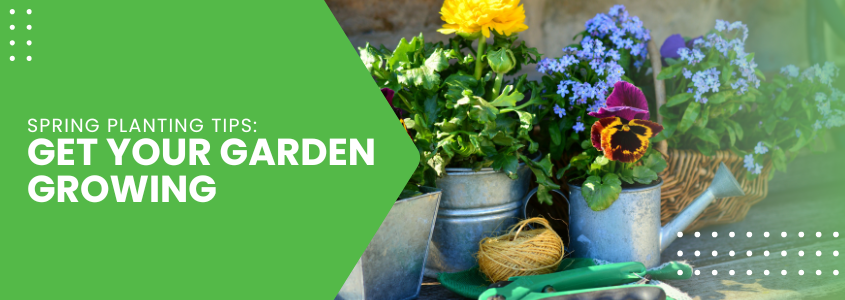Spring Planting Tips: Get Your Garden Growing
Spring is in the air! As the days grow longer and the temperatures begin to rise, it’s the perfect time to roll up your sleeves and get your garden ready for the season. Whether you’re a seasoned gardener or a beginner with a green thumb in training, these spring planting tips will help you cultivate a beautiful and productive garden.
1. Start with a Plan
Before you dig in, map out your garden. Decide what you want to grow—vegetables, flowers, or both—and consider the space and sunlight requirements for each plant. Use companion planting strategies to optimize growth and deter pests.
For example:
- Pair tomatoes with basil for pest control and better flavor.
- Keep carrots and onions close to ward off carrot flies.
2. Prep Your Soil
Healthy plants start with healthy soil. Begin by:
- Clearing debris: Remove weeds, dead plants, and leaves from your garden beds.
- Testing your soil: Use a soil testing kit to check pH levels and nutrient content. Most plants thrive in slightly acidic to neutral soil (pH 6.0–7.0).
- Amending the soil: Add compost, aged manure, or organic fertilizers to enrich the soil with nutrients and improve drainage.
3. Choose the Right Plants for Your Zone
Select plants suited to your region’s climate and growing season. Check the USDA Plant Hardiness Zone Map to ensure your choices will thrive in your area. Some hardy springtime favorites include:
-
-
- Vegetables: Lettuce, spinach, peas, and radishes.
- Flowers: Pansies, daffodils, and tulips.
-
4. Start Seeds Indoors
If you want a head start, plant seeds indoors before the last frost. Use seed trays or small pots with quality seed-starting mix. Once seedlings are strong enough and the weather has warmed, transplant them into your garden.
5. Timing Is Everything
Pay attention to your local frost dates and plant accordingly. Early bloomers and cold-tolerant crops can go in the ground earlier, while heat-loving plants like tomatoes and peppers should wait until the risk of frost has passed.
6. Water Wisely
Spring weather can be unpredictable, so establish a consistent watering routine:
- Water deeply and less frequently to encourage deep root growth.
- Avoid overwatering, which can lead to root rot.
- Use mulch around plants to retain moisture and regulate soil temperature.
7. Support Pollinators
Create a pollinator-friendly garden by planting native flowers and herbs that attract bees, butterflies, and other beneficial insects. Pollinators help your garden flourish by increasing crop yields and promoting biodiversity.
8. Prune and Divide
- Prune dead or damaged branches from shrubs and trees to encourage healthy growth.
- Divide perennials like daylilies and hostas to prevent overcrowding and rejuvenate plants.
9. Protect Your Plants
Spring weather can bring unexpected challenges like frost or pests.
- Use row covers or frost blankets to shield young plants on chilly nights.
- Check for pests early and use organic methods like neem oil or companion planting to manage infestations.
10. Enjoy the Process
Gardening is as much about the journey as the result. Take time to enjoy being outdoors, get your hands dirty, and watch as your efforts bloom and thrive.
With a little planning and care, your spring planting efforts will set the stage for a vibrant, healthy garden all season long. Happy planting!



